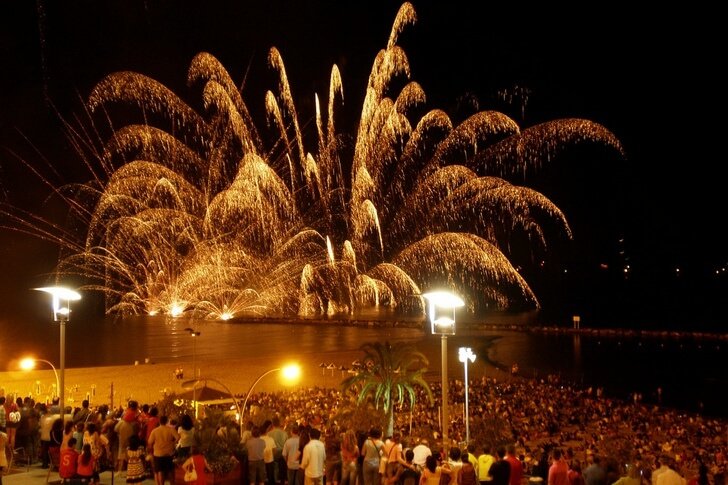The popular Spanish resort of Alicante occupies a central place among the towns of the Costa Blanca, a real pearl of the Mediterranean. In the midst of the summer heat, the beaches of the city are very crowded, as not only foreign tourists, but also the Spaniards themselves love to relax in this place.
Tourist Alicante is comfortable hotels, snow-white yachts, well-groomed embankments and magnificent beaches. Also, the city has another side - traditional Spanish streets, ancient facades of dilapidated houses and powerful fortresses from the decline of the Spanish colonial empire. If you alternate informative walks around Alicante with a vacation on its impeccable coast, the vacation promises to be varied and eventful.
What to see and where to go in Alicante?
The most interesting and beautiful places for walking. Photos and a short description.
- Esplanade of Spain
- Port of Alicante
- Fort Santa Barbara
- Fort San Fernando
- Santa Cruz area
- Luceros Square
- Plaza Gabriel Miro
- Basilica of Santa Maria
- Cathedral of Saint Nicholas
- Archaeological Museum
- Volvo Ocean Race Museum
- Modern Art Museum
- Museum of Fine Arts at Gravina Palace
- Central Market
- City Hall of Alicante
- House of Carbonel
- Ship Holy Trinity
- Tabarka Island
- Postiguet beach
- Bonfires of Saint John the Baptist
Esplanade of Spain
Walking boulevard, the heart of tourist life in Alicante. Restaurants, shops and banks are located here. In the evenings, performances are shown in a special concert pavilion. The street stretches for 500 meters from the city port to a small cozy square. The pavement of the Esplanade is lined with multi-colored stone, forming a harmonious pattern. On the sides are slender palm alleys.
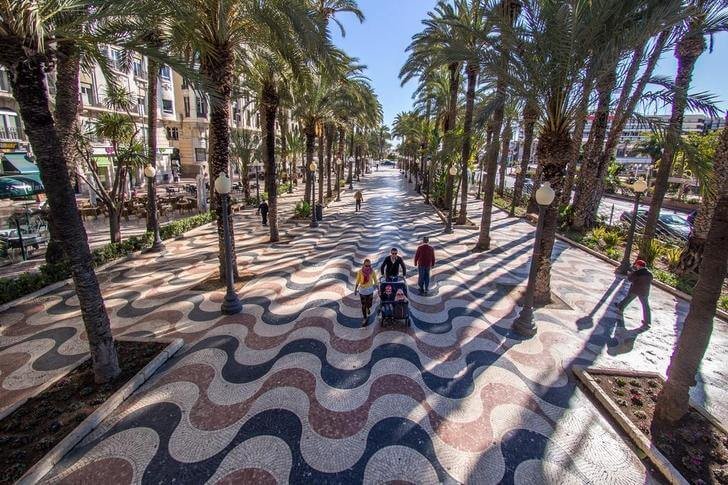
Port of Alicante
The port of Alicante is a picturesque marina - a mooring place for yachts, boats, motor boats and other types of vessels. Mediterranean cruise ships often anchor here. The harbor is also of great economic importance, with cargo ships arriving regularly. In the port, tourists can order a boat trip on a yacht or rent a whole ship. Along the port of Alicante stretches the main walking street - the Esplanade of Spain.
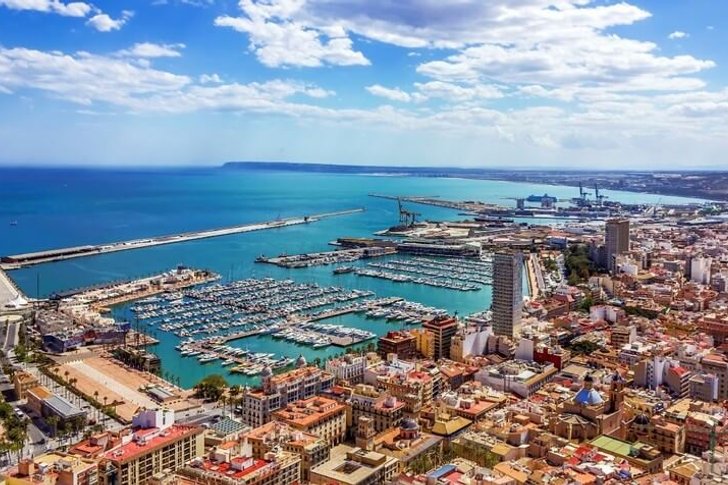
Fort Santa Barbara
The fortress is one of the main historical sights of Alicante. It is located at the top of Mount Benacantil. The construction was erected in the 9th century during the reign of the Moors over the Iberian Peninsula. Until the 18th century, the fort was of great strategic importance and was used for its intended purpose. Until 1963, the fortress was in disrepair. After the restoration, its territory was open to the public.

Fort San Fernando
The castle is located in the central part of the city. It was erected in the 19th century in order to repel a possible attack by the troops of Napoleon Bonaparte. But the French never came to Alicante. The castle is surrounded by a picturesque park, perfectly adapted for sports and walking. After a long period of neglect, the fortress was restored and is open to everyone.
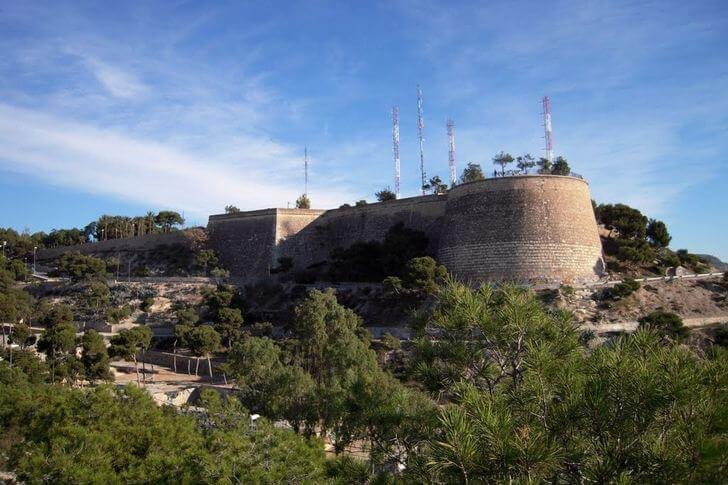
Santa Cruz area
The historical part of the city, located at a relative distance from the tourist areas at the foot of Benacantil. The old town consists of only a few small streets that lead to the fortress of Santa Barbara. Santa Cruz is a typical urban quarter of a Spanish provincial town with walls peeling here and there, charming flower beds on small terraces and bright facades.
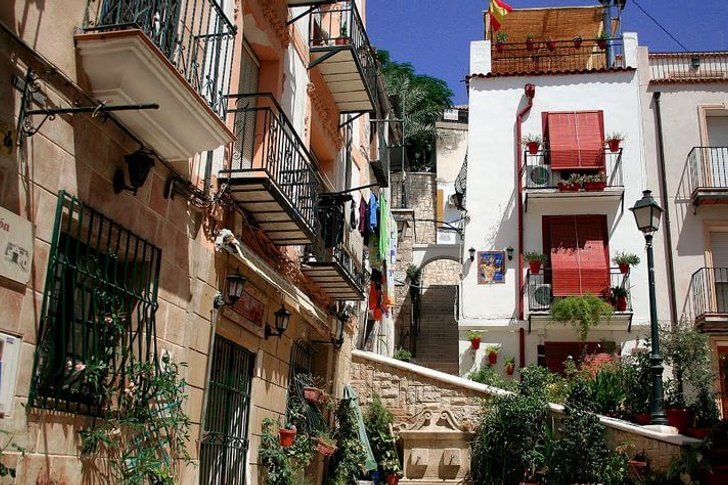
Luceros Square
The main square of Alicante, from where many tourist routes start. Buses from the airport also come here. In the center of Luceros there is a stone fountain from 1930, surrounded by a green lawn with palm trees. Around the square are modern residential buildings, offices, retail space and administrative offices. Alicate's two central highways start at Luceros.

Plaza Gabriel Miro
The area is a shady green square, overgrown with subtropical vegetation. Centuries-old trees with powerful trunks, palm trees and flowers grow here. This is a great place to take shade from the scorching Spanish sun. The square and square are named after the writer Gabriel Miro, who was a native of Alicante. This fact is reminded by a memorial stone to the left of the central fountain.
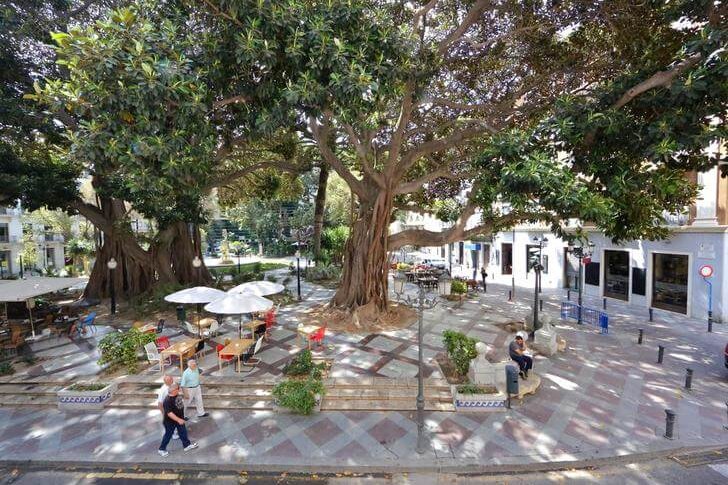
Basilica of Santa Maria
Gothic church of the late XIV century, located on the site of a former mosque. The temple was founded in honor of the expulsion of the Moors and the liberation of this part of Spain from Arab rule. In later centuries, the basilica was rebuilt in the Spanish Baroque style. Inside the church there is a gilded altar from the 18th century and a valuable organ from the 16th century. The interior is decorated with skillful statues of St. John and the Virgin Mary.

Cathedral of Saint Nicholas
The temple is dedicated to Saint Nicholas - the patron saint of Alicante. It was erected on the ruins of a mosque in the 17th century. The building was built in a transitional style from the Renaissance to the Baroque, which is characterized by restraint of architectural forms. The cathedral is crowned with an impressive 45-meter dome; marble dominates in the interior decoration. The church altar of the 16th century, created by the master N. Borras, deserves special attention. The relics of Saint Francis Xavier, Felicita and Roch are kept in the temple.

Archaeological Museum
A large museum with an impressive collection of 81,000 items. A large number of exhibits were found and collected on the territory of the Costa Blanca region. The Archaeological Museum of Alicante is on a par with the largest collections in Spain. Exhibition halls are equipped with modern equipment, so visitors have the opportunity to watch videos or listen to short lectures about a particular historical period.
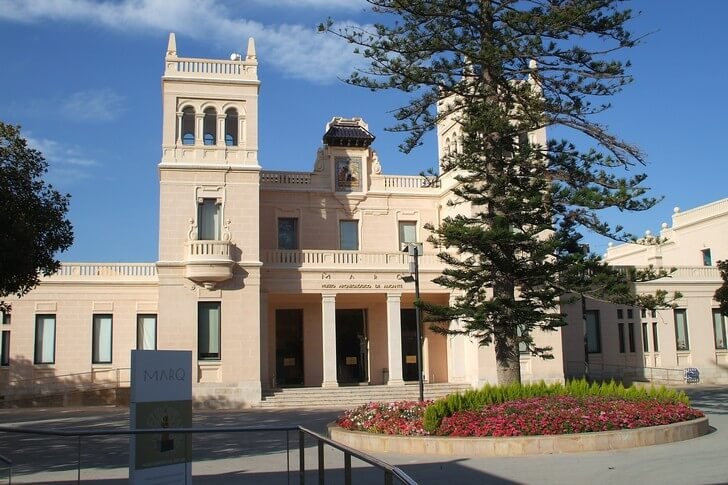
Volvo Ocean Race Museum
Volvo Ocean Race is a unique round-the-world regatta that starts in Alicante and lasts for several months. It has been held here since 2005. In 2012, a museum dedicated to this event was opened, which is the only one of its kind. Thanks to interactive technologies, visitors will be able to feel like participants in a grandiose voyage, as well as learn more about the features of the ecosystems of the seas and oceans.

Modern Art Museum
A gallery with an impressive collection of real "mastodons" of contemporary art. There are works by Miro, Picasso, Chagall, Kandinsky, Varaseli and Gonzalez. The museum is housed in an old building of the 17th century. Its history began in 1978, when the local abstract artist E. Sempere donated his collection of paintings to the city. The works of Sempre himself occupy a separate floor of the museum.
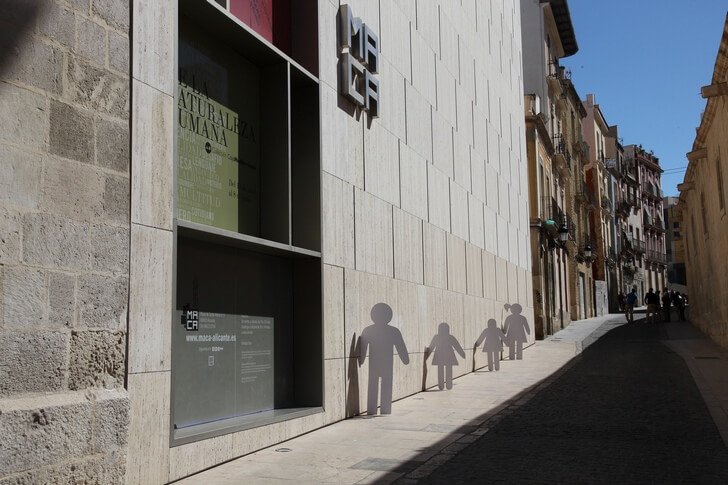
Museum of Fine Arts at Gravina Palace
The gallery is located in an 18th century palace. The museum opened in 2001 after a complete restoration of a somewhat dilapidated building. The museum collection is a collection of paintings by artists and sculptors from Alicante and the surrounding area, who worked in the period of the 16th-20th centuries. There are works by H. Agrosot, L. Casanova, A. Hisbert, F. Cabrera and other masters. The museum has a program to support young talents.
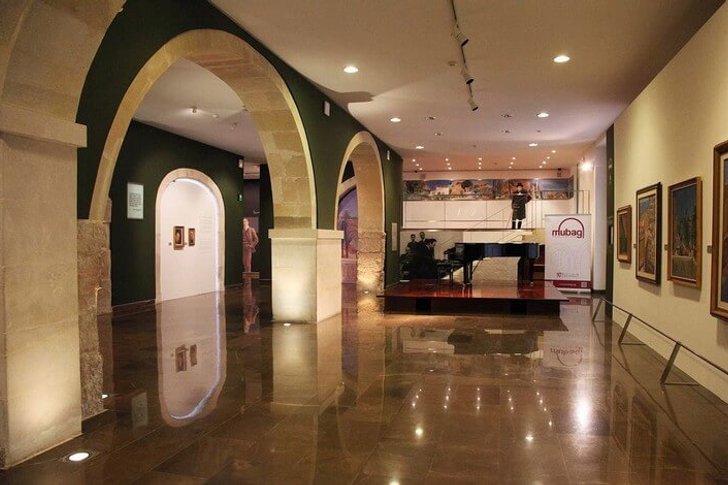
Central Market
The main market of Alicante, located in a building that occupies an entire city block. The malls are located on two floors - one sells meat of all possible types and forms, the other has numerous stalls with seafood, fish, vegetables and fruits. The market also has a large section with wines, cheeses, olives, spices, nuts and all kinds of sweets.

City Hall of Alicante
The City Hall building was built in the 18th century according to the project of V. Soler in the Spanish Baroque style. Construction work continued for about 90 years. On the square in front of the city hall, a system of fountains is installed, whose jets hit directly from the pavement, which delights children and local dogs. Public holidays are often held near the city hall. In the lobby of the building is a sculpture of St. John, created by Salvador Dali.

House of Carbonel
The building was erected in the 20s of the 20th century in the Art Nouveau style, fashionable at that time, with neo-baroque elements. Today it is considered one of the most picturesque in Alicante. The house was designed by the architect J. B. Ramos for E. Carbonel, a textile industrialist who settled in Alicante. The luxurious building was erected on the site of the old city market next to the Palace Hotel.

Ship "Holy Trinity"
The ship is permanently moored in the port of the city. It is a copy of a real galleon of the XVIII century, which was built in Cuba. The ship took part in many battles, including the famous Battle of Trafalgar. After this devastating battle, the Holy Trinity sank off the coast of Cadiz in 1805. A copy of the ship was built in the 2000s. A restaurant, a bar, a nightclub and a museum were placed on board.

Tabarka Island
The island is located off the Costa Blanca and is home to several dozen people employed in the tourism industry. The island is mentioned in documents of the 18th century in connection with the seizure of its territory by the Tunisian army. Tabarka has several old churches and mansions. Numerous restaurants are open for tourists, offering a wide variety of seafood dishes.

Postiguet beach
The beach is located in the center of the resort area of Alicante. Thanks to the picturesque surroundings, white sand and clear water, it has received the prestigious Blue Flag quality mark. Postiguet is considered the best city beach, there are numerous cafes, playgrounds and equipment rental for water sports. The beach is located quite close to the historical part of Alicante.

Bonfires of Saint John the Baptist
Folk Spanish festival, which is celebrated every summer on June 18 - 29. It is dedicated to the Day of Saint John the Baptist. The largest celebrations take place on the territory of Alicante. All week long, colorful processions, parades and a competition of giant figures are organized on the streets, fireworks are launched, people burn scarecrows and jump over the fire. Some traditions of this holiday are similar to the Slavic Midsummer Day.
